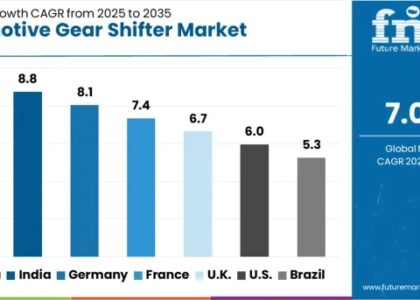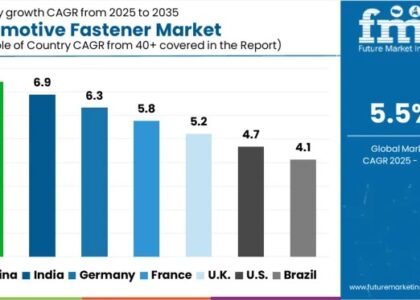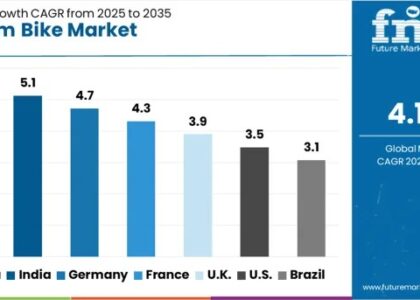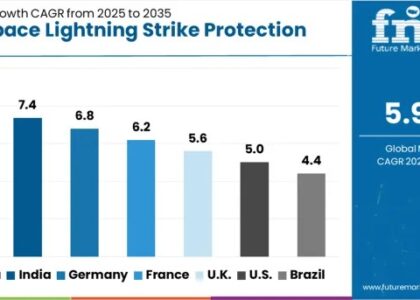The global packaging foam market is poised for remarkable growth, with an anticipated value of US$ 6.9 billion in 2023. This surge is attributed to the escalating demand for sustainable packaging solutions, propelling the market to a projected value of US$ 12.3 billion by 2033, boasting a robust CAGR of 5.9%.
A significant trend driving this growth is the increasing emphasis on product safety and protection across diverse industries. Companies worldwide are increasingly acknowledging the imperative of delivering products in flawless condition, spurring a rising demand for packaging foams engineered to effectively cushion and safeguard delicate and sensitive items during transportation and storage.
Packaging foams are designed to offer superior shock absorption properties, critical for shielding products from impacts, vibrations, and drops that occur during handling, loading, and unloading. Acting as a protective barrier, these foams absorb and disperse external forces, minimizing the risk of damage and ensuring the integrity of packaged goods throughout the supply chain.
The ability of packaging foams to dissipate energy and prevent it from reaching enclosed products is pivotal in maintaining their integrity and ensuring safe delivery to end-users.
Find more insights in a sample report: https://www.futuremarketinsights.com/reports/sample/rep-gb-4771
A significant factor contributing to market growth is the focus on sustainable packaging solutions. The growing emphasis on sustainability is revolutionizing the packaging industry, including the foam segment. Manufacturers and consumers alike are increasingly concerned about the environmental impact of packaging materials, which has led to a shift towards sustainable packaging foams made from recyclable or biodegradable materials. The foams offer similar protective properties while reducing waste and carbon footprint. The demand for eco-friendly packaging solutions is expected to fuel the growth of the packaging foam market.
Technological advancements in foam manufacturing have significantly improved the performance and versatility of packaging foams. Innovations in materials and production processes have led to the development of foams with enhanced properties such as better cushioning, improved energy absorption, reduced weight, and increased durability. The advancements make packaging foams more attractive to industries seeking high-performance and cost-effective solutions. The ability to customize foam shapes and designs further adds value to the packaging foam market.
Key Takeaways from the Market Study
- Global Packaging Foam market was valued at US$ 6.5 billion by 2022-end.
- From 2018 to 2022, the market demand expanded at a CAGR of 4.8%.
- India is expected to hold a dominant CAGR of 8.1% during the forecast period.
- By material type, the polyurethane (PU) segment is expected to constitute a CAGR of 5.8% in 2033.
- On the basis of end-use, the consumer electronics segment is expected to dominate the market with a CAGR of 5.7% in 2033.
- From 2023 to 2033, Packaging Foam market is expected to flourish at a CAGR of 5.9%.
- By 2033, the market value of Packaging Foam is expected to reach US$ 12.3 billion.
Expansion of automotive sector, across the globe is a major factor that is expected to propel the growth of the packaging foam market in the near future, remarks an FMI analyst.
Request Report Methodology: https://www.futuremarketinsights.com/request-report-methodology/rep-gb-4771
Growth Drivers in the Packaging Foam Industry:
- E-commerce Boom: The rapid growth of e-commerce platforms has significantly increased the demand for packaging materials, including foam, to ensure the safe transportation of goods. As more consumers turn to online shopping, the packaging foam market experiences a surge in demand.
- Sustainable Packaging: With an increasing focus on environmental concerns, there is a growing demand for sustainable and eco-friendly packaging solutions. Packaging foam manufacturers are exploring and adopting biodegradable and recyclable materials to meet the rising demand for environmentally responsible packaging.
- Technological Advancements: Continuous innovations in foam manufacturing technologies have led to the development of lighter, more durable, and cost-effective packaging foam solutions. These advancements enhance the overall efficiency of the packaging process and contribute to the growth of the market.
- Globalization of Supply Chains: The expansion of global supply chains has resulted in the need for robust and protective packaging solutions to ensure that products reach their destinations intact. Packaging foam, with its ability to provide excellent cushioning and impact resistance, is increasingly adopted to safeguard goods during transportation.
- Increasing Awareness of Product Safety: As consumers become more conscious about the safety of products during transit, manufacturers are prioritizing secure and damage-resistant packaging. Packaging foam, with its shock-absorbing properties, is witnessing heightened demand across various industries, driving the overall growth of the packaging foam market.
Industry Trends in the Packaging Foam:
- Rise of Biodegradable Foam: The packaging foam market is witnessing a shift towards biodegradable foam materials, driven by the growing emphasis on sustainability. Manufacturers are investing in research and development to create foam products that decompose naturally, reducing environmental impact.
- Customization and Personalization: There is a rising trend in the customization of packaging foam solutions to cater to specific product requirements. Customized foam packaging not only enhances product protection but also provides a unique branding opportunity for companies looking to differentiate their products in the market.
- Focus on Circular Economy: The packaging foam industry is increasingly adopting principles of the circular economy, aiming to reduce waste and promote recycling. Companies are exploring ways to design foam products that are easily recyclable, contributing to a more sustainable and closed-loop system.
- Smart Packaging Integration: The integration of smart technologies into packaging foam is emerging as a trend, allowing for real-time tracking, monitoring, and data collection during the shipping process. This innovation enhances supply chain visibility and ensures better control over the condition of products in transit.
- Regulatory Compliance and Safety Standards: Stringent regulations regarding packaging materials and increased awareness of health and safety standards are influencing the packaging foam market. Manufacturers are adapting their processes to comply with regulations and meet the rising expectations for safe and secure packaging solutions.
Grow your profit margin with Future Market Insights Inc. – Buy the report: https://www.futuremarketinsights.com/checkout/4771
Key Segments:
By Material Type:
Polystyrene
Polyurethane (PU)
Poly Vinyl Chloride (PVC)
Others
By Product Type:
Flexible Foam
Rigid Foam
By End Use:
Automobile Industry
Construction Industry
Food & Beverages Industry
Consumer Electronics
Homecare & Personal Care
By Application:
Inserts
Corner & Edge Protectors
Anti-Static ESD Foam
Liners
Other
Region:
North America
Latin America
Western Europe
Eastern Europe
South Asia and Pacific
East Asia
Middle East and Africa (MEA)
Author
Ismail Sutaria (Lead Consultant, Packaging and Materials) has over 8 years of experience in market research and consulting in the packaging & materials industry. Ismail’s strength lies in identifying key challenges faced by the client and offering logical and actionable insights to equip the clients with strategic decision-making power.
Ismail has been an instrumental part of several transformational consulting assignments. His key skills include competitive benchmarking, opportunity assessment, macroeconomic analysis, and business transformation advisory. Ismail is an MBA holder in Marketing and has a Bachelor’s Degree in Mathematics.
About Future Market Insights (FMI)
Future Market Insights, Inc. (ESOMAR certified, recipient of the Stevie Award, and a member of the Greater New York Chamber of Commerce) offers profound insights into the driving factors that are boosting demand in the market. FMI stands as the leading global provider of market intelligence, advisory services, consulting, and events for the Packaging, Food and Beverage, Consumer, Technology, Healthcare, Industrial, and Chemicals markets. With a vast team of over 400 analysts worldwide, FMI provides global, regional, and local expertise on diverse domains and industry trends across more than 110 countries.
Contact Us:
Future Market Insights Inc.
Christiana Corporate, 200 Continental Drive,
Suite 401, Newark, Delaware – 19713, USA
T: +1-845-579-5705
For Sales Enquiries: sales@futuremarketinsights.com
Website: https://www.futuremarketinsights.com
LinkedIn| Twitter| Blogs | YouTube





